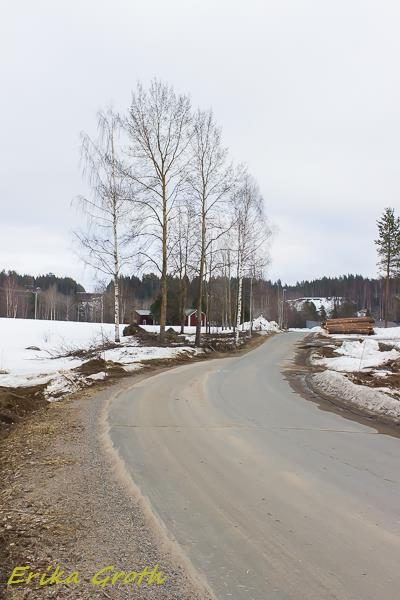
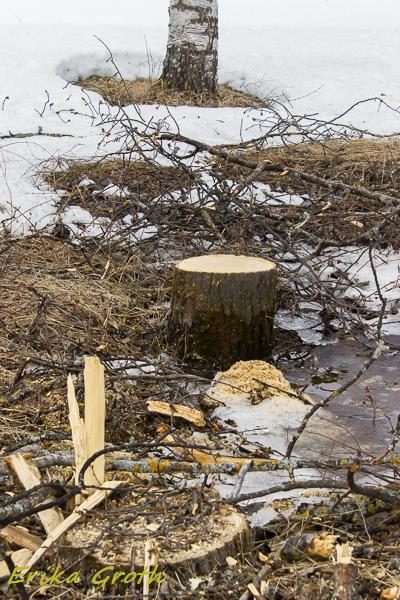
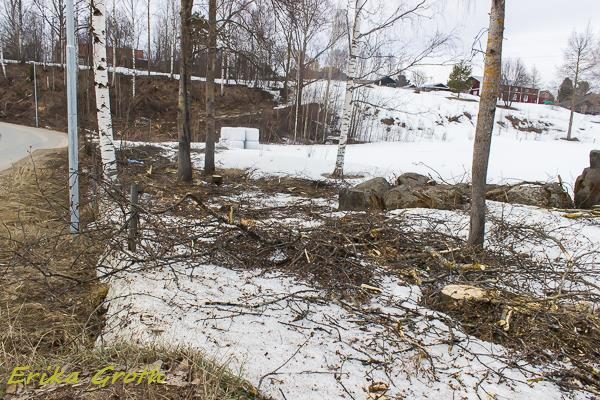
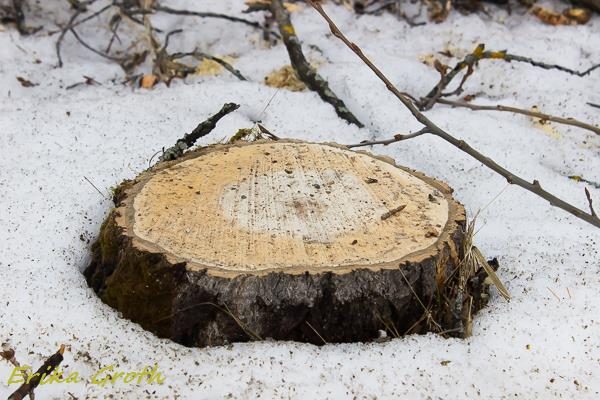
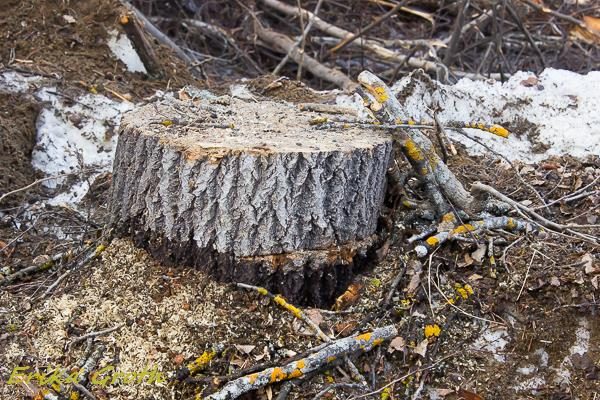
Nu när snön har börjat smälta bort och stubbarna syns är det tydligt att de saknade träden har blivit nersågade. Och de verkar fortfarande hålla på att fälla träd. Jag hoppas bara att i alla fall några av asparna får stå kvar året ut så att jag kan slutföra det här trädföljarprojektet.
Now that the snow is melting and the tree stumps are visible it’s clear that the missing trees have been cut down. And the cutting seems to be ongoing still. I just hope that at least some of the aspens will be left standing until the end of the year so that I can complete this year’s tree following project.
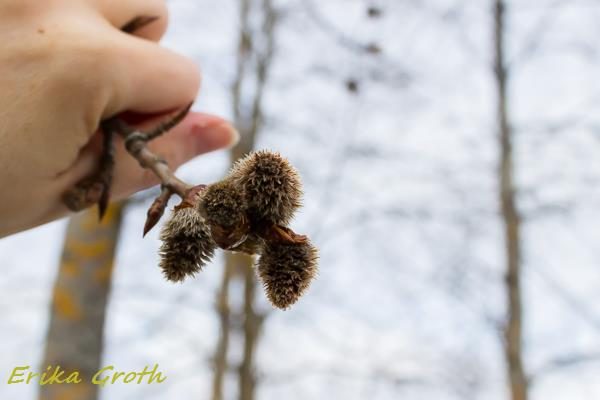
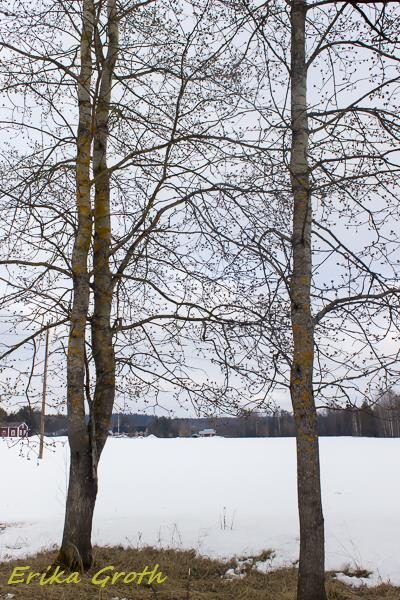 De kvarvarande asparna har börjat blomma. Jag tycker det verkar vara hanhängen som håller på att slå ut. Aspar är skildkönade, det vill säga, träden är antingen hanträd eller honträd.
De kvarvarande asparna har börjat blomma. Jag tycker det verkar vara hanhängen som håller på att slå ut. Aspar är skildkönade, det vill säga, träden är antingen hanträd eller honträd.
The remaining aspens are starting to flower. I think it looks like male flowers that are emerging. Aspens are dioecious, meaning that each tree is either male or female.
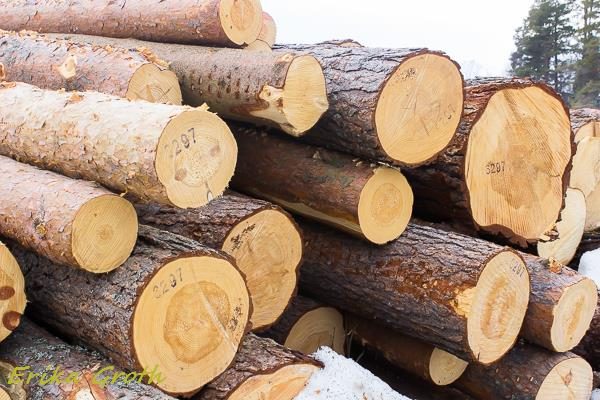
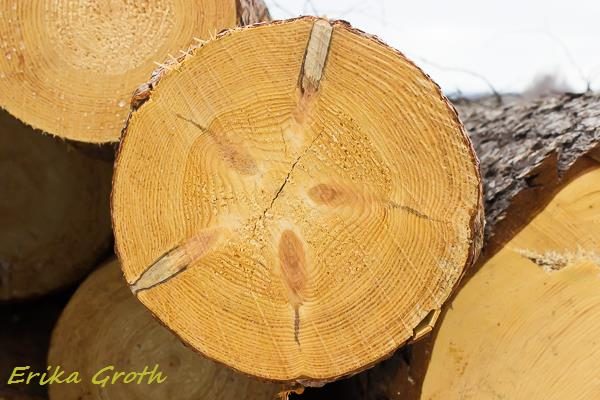 De trädstammar som ligger och väntar på att bli borttransporterade är inte resterna av de fällda asparna utan barrträd. Men i snittytan på vissa av dem kan man se fina exempel på hur kvistar och grenar bildas långt inne i stammen och tränger sig ut genom veden. Sådana pedagogiska exempel värmer i hjärtat eftersom de påminner mig om hur jag en gång i tiden undervisade universitetsstudenter i växtanatomi och växtfysiologi.
De trädstammar som ligger och väntar på att bli borttransporterade är inte resterna av de fällda asparna utan barrträd. Men i snittytan på vissa av dem kan man se fina exempel på hur kvistar och grenar bildas långt inne i stammen och tränger sig ut genom veden. Sådana pedagogiska exempel värmer i hjärtat eftersom de påminner mig om hur jag en gång i tiden undervisade universitetsstudenter i växtanatomi och växtfysiologi.
The stacked tree logs that are waiting to be removed are not the remains of the aspens but conifers. But on some of the cut surfaces you can see nice examples of how twigs and branches start out near the middle of the trunk and work their way out through the wood. Such pedagogical examples warm my heart since they remind me of how, many years ago, I used to teach university students plant anatomy and physiology.
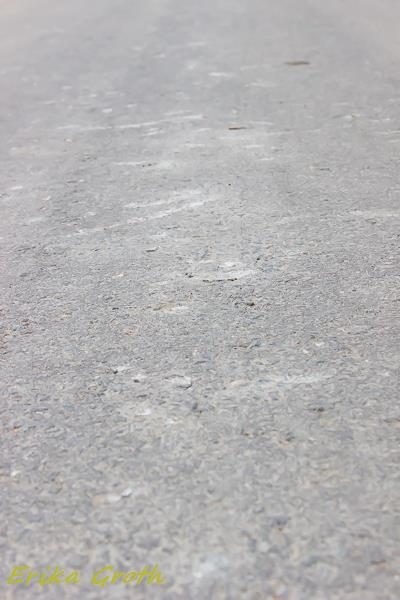
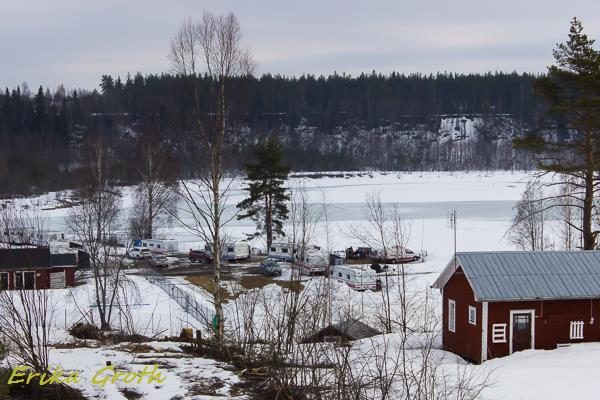
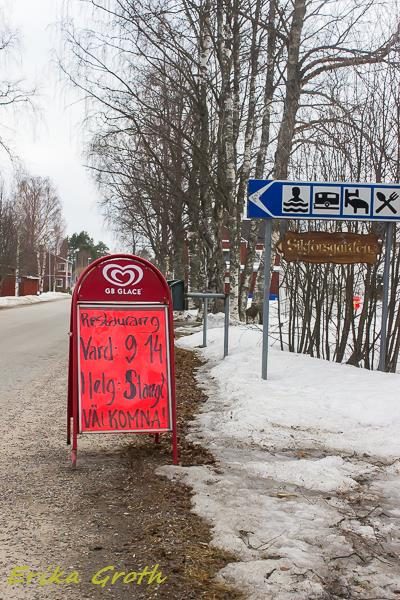 Det märks att vägen vid asparna är skadad av tunga fordon vilket inte direkt förbättrar den redan ganska dåliga vägkvaliteten. En fördel med att de har rensat bland träden är i alla fall att älven syns bättre från vägen. Isen har inte gått än, men det är nog inte så många veckor kvar. Eftersom campingrestaurangen för närvarande håller stängt på helgerna kunde jag inte avsluta mitt trädspanande med en fika. Men kanske nästa gång…
Det märks att vägen vid asparna är skadad av tunga fordon vilket inte direkt förbättrar den redan ganska dåliga vägkvaliteten. En fördel med att de har rensat bland träden är i alla fall att älven syns bättre från vägen. Isen har inte gått än, men det är nog inte så många veckor kvar. Eftersom campingrestaurangen för närvarande håller stängt på helgerna kunde jag inte avsluta mitt trädspanande med en fika. Men kanske nästa gång…
It is clear that the road by the aspens has been damaged by heavy vehicles which doesn’t improve the already rather bad road quality. One good thing about the tree cutting is that at least now you can see the river much better from the road. The ice hasn’t broken yet but I’m guessing it will break in a few more weeks. Since the camping restaurant is currently closed during the weekends I couldn’t end my tree watching with a coffee and cake break. But maybe next time…
Fotona är tagna den 6 april 2019.
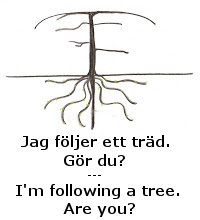 Kolla även in andra trädföljare på The Squirrelbasket (internationellt).
Kolla även in andra trädföljare på The Squirrelbasket (internationellt).

Some fascinating insights into your part of the world.
And I hadn’t realised about branches starting near the centre, either…
All the best
You brought back a memory of when a cut log made clear to me the relationship of tree and branch growth … also many years ago.
I hope they leave some aspens for you to follow, it is nice that the story of the cut aspens is being told, and I found it very interesting about branches starting from the centre, I did not know this, thank you Erica, I notice the conifer logs are stamped with a number, and heavy vehicules can do so much damage, also if they make potholes it can be very dangerous for other road users,
it’s nice to see you have had some warmer weather, Frances
The road, like almost every other small road around here, already have lots of potholes and various breaks in the asphalt. It’s really only the main highways that are ok. Driving pretty much anywhere in this region tends to be a bumpy ride. Everyone complains to both the local and the national traffic administration but it doesn’t achieve much so you just get used to it and adapt.